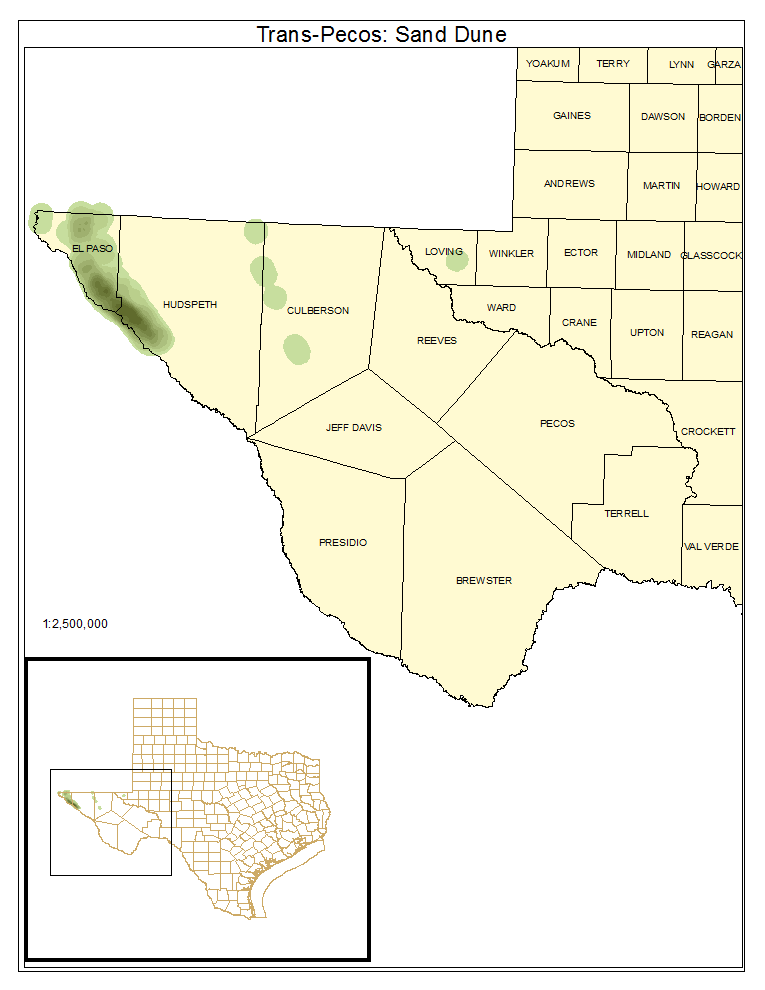North American Warm Desert Active and Stabilized Dunes
Geology:
Quaternary aeolian sand deposits associated with the Hueco Bolson and the Salt Basin.
Landform:
Rolling dunes and sandy level plains.
Soils:
Sand Hills and Deep Sand Ecological Sites.
Parent Description:
This system occupies the deep sands adjacent to the Salt Basin west of the Guadalupe Mountains, and the Hueco Basin along the Rio Grande. These sands are characterized by sparsely vegetated active dunes as well as stabilized dunes colonized by species such as Sporobolus giganteus (giant dropseed), Sporobolus flexuosus (mesa dropseed), Sporobolus cryptandrus (sand dropseed), Sporobolus contractus (spike dropseed), Bouteloua eriopoda (black grama), Schizachyrium scoparium (little bluestem), Aristida purpurea (purple threeawn), Prosopis glandulosa (honey mesquite), Psorothamnus scoparius (broom pea), Artemisia filifolia (sand sage), Yucca elata (soaptree yucca), Croton dioicus (grassland croton), Dimorphocarpa wislizeni (spectaclepod), Helianthus petiolaris (plains sunflower), Palafoxia sphacelata (rayed palafoxia), Heliotropium convolvulaceum (bindweed heliotrope), Eriogonum annuum (annual wildbuckwheat), Tripterocalyx carneus (winged sandpuffs), Amsonia tomentosa var. stenophylla (wooly bluestar), Proboscidea althaeifolia (devilshorn), and Ipomopsis wrightii (leafy skyrocket).
Ecological Mapping Systems
Trans-Pecos: Sand Dune
Sparsely vegetated sites on deep sand.
Distribution Map

Public Land Occurrence
Trans-Pecos: Desert Deep Sand and Dune Grassland
Stabilized dune with primarily herbaceous cover, though some woody species may be present.
Distribution Map
